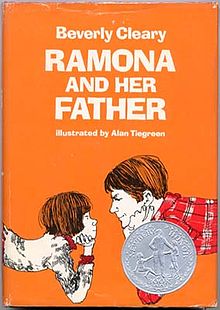[button color=”black” size=”big” link=”http://affiliates.abebooks.com/c/99844/77798/2029?u=http%3A%2F%2Fwww.abebooks.com%2Fservlet%2FSearchResults%3Fisbn%3D9780020165811″ target=”blank” ]Purchase here[/button]
The Face in the Frost
by John Bellairs
John Bellairs (1938-91) specialized in writing spooky tales of the mysterious and macabre for younger readers. One of the most mysterious and macabre things about him is the fact that he went on writing them after his death. It turns out that four of his books were completed by Brad Strickland based on sketches left unrealized at the author’s death; Strickland then went on to write at least nine more books based on characters Bellairs created. This accounts for the strange fact that 31 novels are listed on Bellairs’s bibliography, though he only lived to write 18 of them. There may be more pseudo-Bellairs spookiness to come, including a film franchise. Is this a good thing? I suppose the jury is out. Some fans of Bellairs may appreciate the chance to see his work continue, compensating in some degree for his untimely loss. Others may feel emotions ranging from irritation at having to distinguish between books Bellairs really wrote and those ghost-written after his death, to heartbreak at seeing a most unique creative mind lose control over the fruit of his imagination.
My personal feelings, however, are not mixed. I do not plan to read anything to which Brad Strickland set his hand. The way I mean to mourn for the genius of John Bellairs is to read all the books that he actually wrote, period. To that end, I made this book my first real purchase at the Amazon Kindle Store (not counting dozens of books that can be “bought” for $0.00). After reading its 11 chapters in one swift, delicious afternoon, I find that the $7.39 I spent on this Kindle book was a really good deal. I look forward to keeping it, treasuring it, re-reading it, singing its praises, and sharing it—starting here, with you.
Most of Bellairs’s work was aimed at a juvenile audience. Evidently this is because his publisher, from some time in the early 1970s, discouraged him from trying to write adult fantasy, a genre that had not yet begun to thrive. So Bellairs devoted most of his novels to the adventures of young Lewis Barnavelt, Johnny Dixon, and Anthony Monday. First, however, he gave us this one book about a grown-up wizard named Prospero (not the one in The Tempest by Shakespeare), his best friend Roger Bacon, and their chillingly dangerous search for the root of a great evil that has begun to darken their unnamed country. Bellairs did write a short prequel to this novel, but it was lost when the fantasy anthology in which it was to be published, wasn’t. He also started to write a sequel to this book, titled The Dolphin Cross—but neither Bellairs himself, during the last decade of his life, nor his ghost-writers since, ever finished it. So there is a wistfulness in enjoying this book, wherein one recognizes its integrity as one of the finest early examples of the wizard novel and regrets the unfulfilled prospect of more of the same.
In this respect, Bellairs’s masterpiece (really his first novel, though it was his third book) begins to attract comparisons to the writings of Mervyn Peake. Both authors were powerhouses of adult fantasy before it became a bestselling genre. Both of them died too soon, leaving behind the torso of unfinished novels for other authors to complete. Both authors had a flair for rich, descriptive, strikingly original utterance. And both authors had a distinct way of blending whimsical silliness with dark, Gothically spooky stylings. The key difference is that Bellairs did it in much leaner, economical prose. His action moves at a brisk pace, taking both characters and readers farther in fewer words. This book, in which so much promise is tantalizingly but compactly embodied, shows Bellairs to be a master of charm, eloquence, and wit, the soul of which is brevity. It is not a long novel. But I think it could be a great one.
Prospero and Roger are admirable wizards. Undeniably goofy, in the cracked-but-great tradition of Gandalf and Dumbledore, they study hard—setting an example for all aspiring wizards. But while they have weird powers at their fingertips, they also have tender and noble hearts, and very human dreads and terrors. And so, as they explore the creepy mystery behind the unseasonable frost spreading across the land, and the evil face that traces itself in the frost on so many people’s windows, and the stirrings of violence and chaos that threaten to set the Northern and Southern Kingdom at each other’s throats, you can’t help feeling their fears and sorrows along with them. In short, you will love them, and thrill to the creepy mystery-adventure through which this book leads them. And then, if you are as sensible as I trust you will be by now, you will place The Face in the Frost in your bookcase or Kindle folder alongside such beautiful tales of wizardry as The Last Unicorn and The Wizard of Earthsea.



